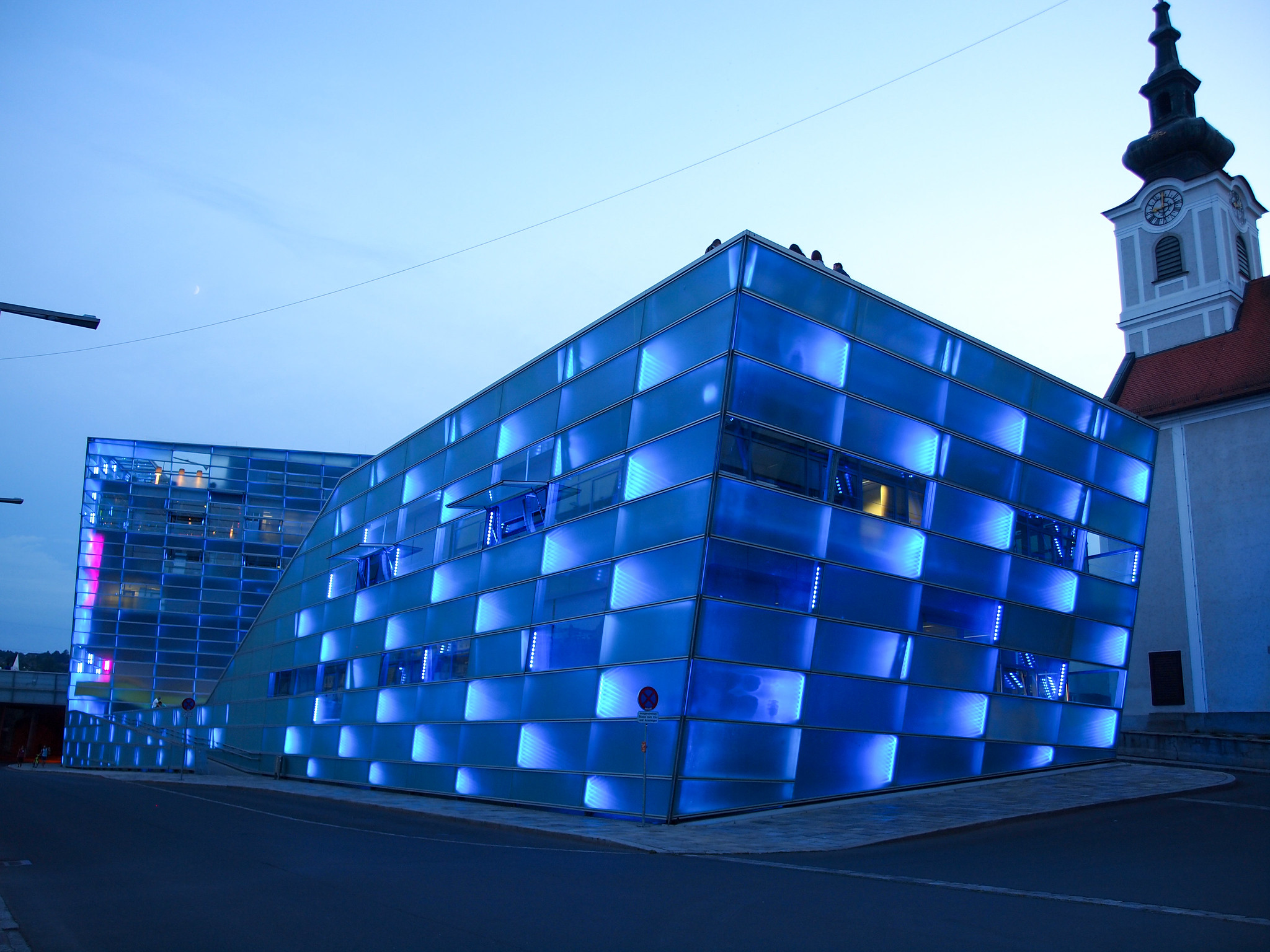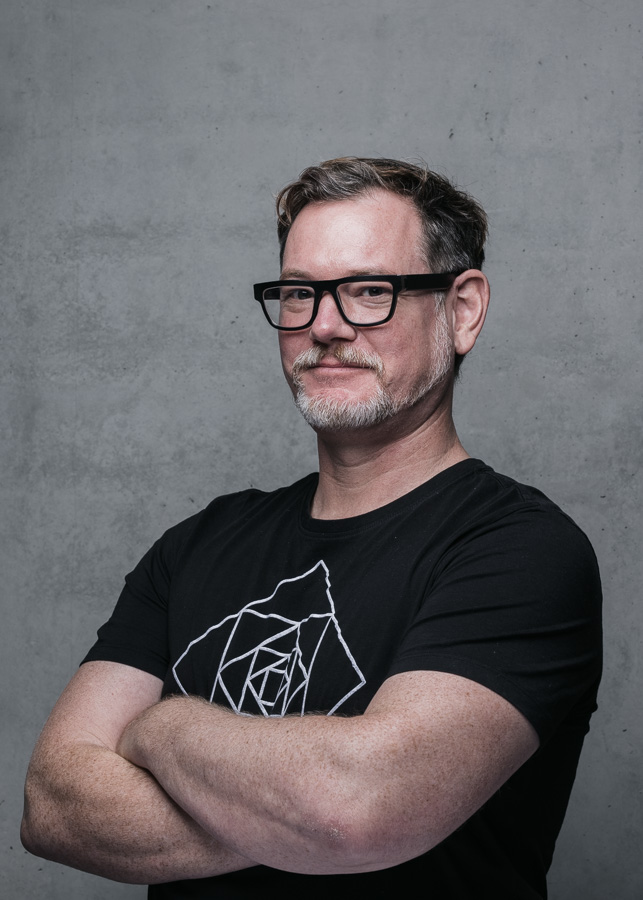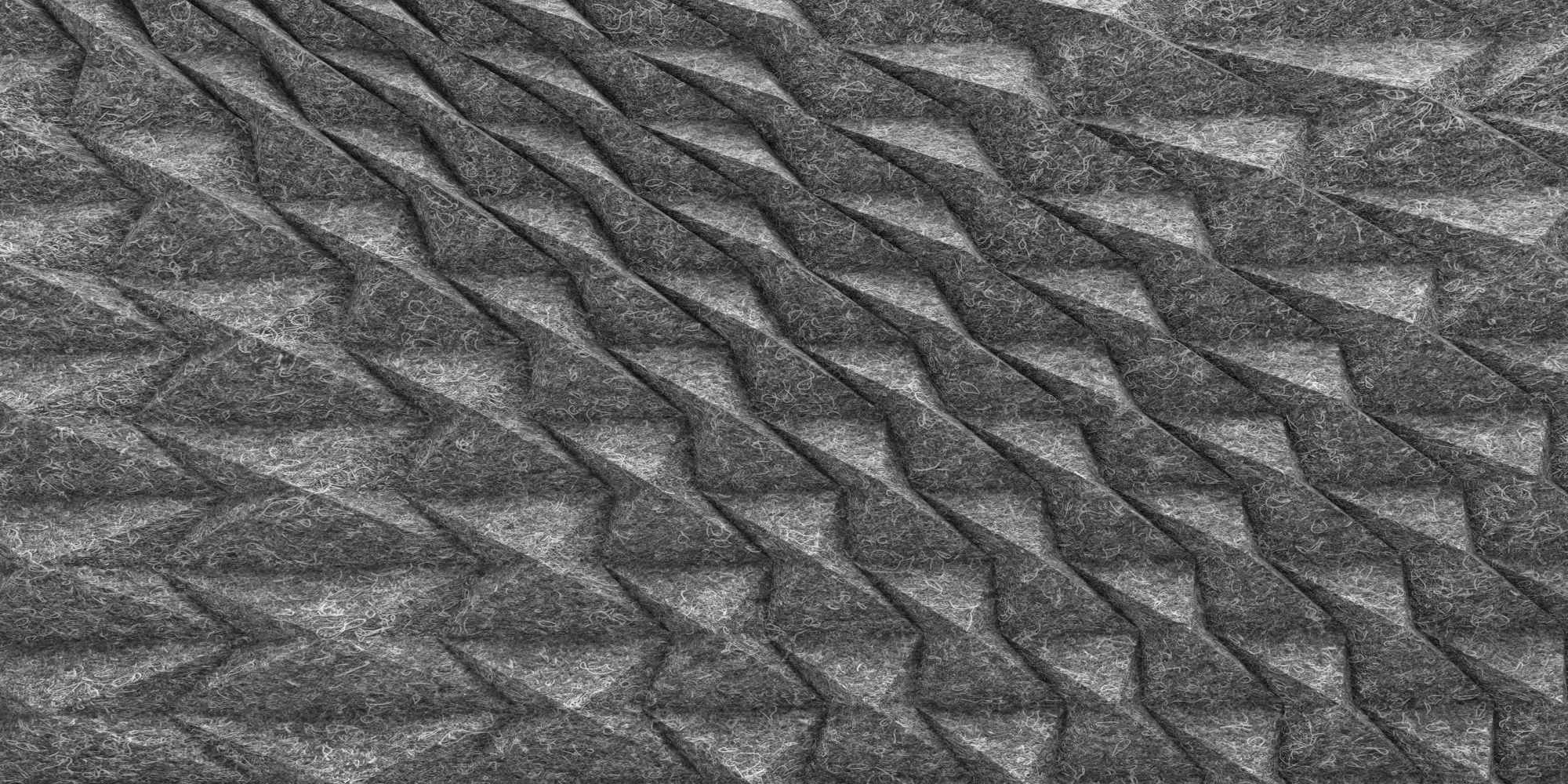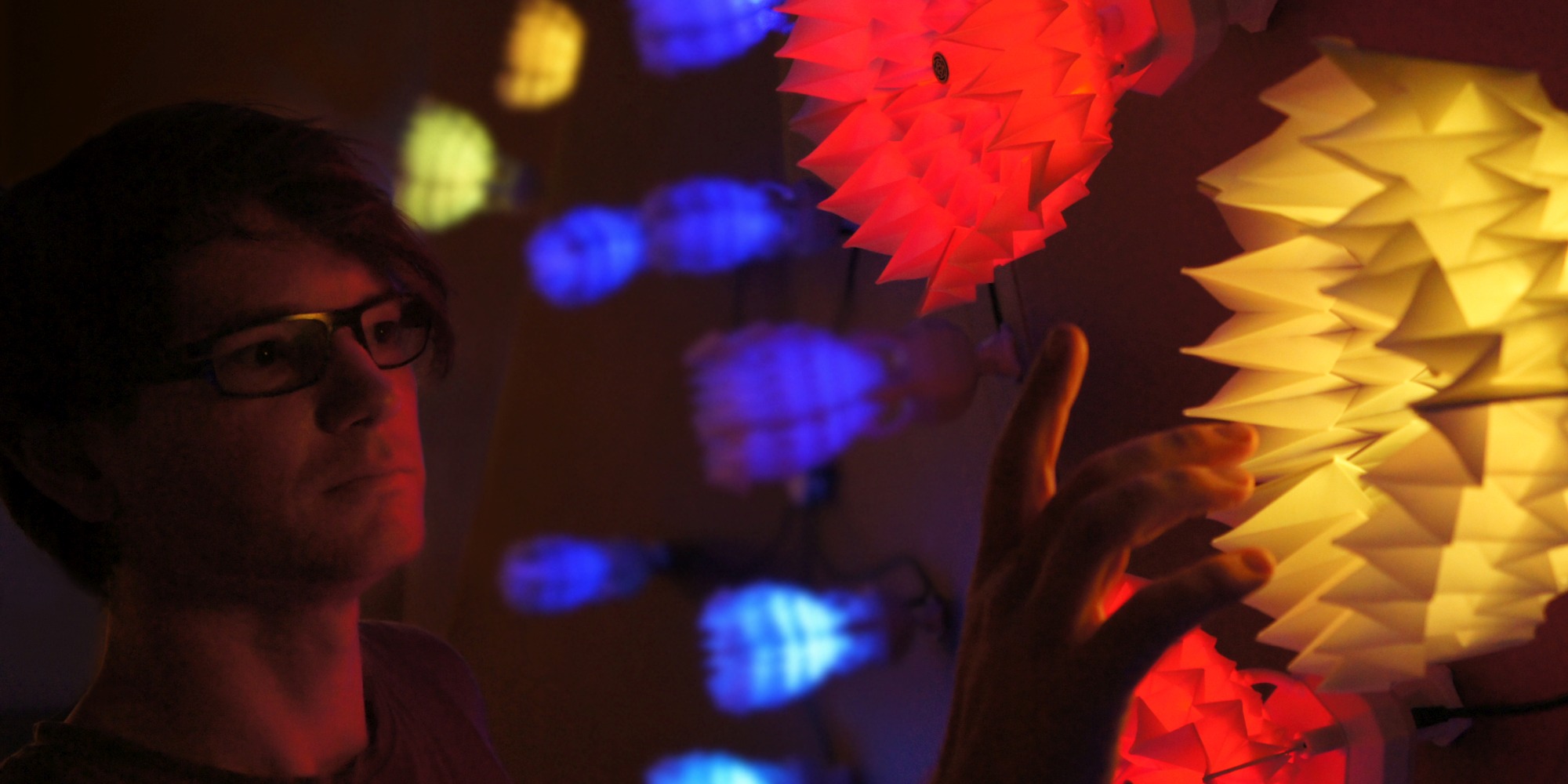“Nature is the ultimate origami artist, her designs will inspire the future of robotics.”
Matthew Gardiner is Head of Art Science Research Strategies and Key Researcher for Origami Robotics at the Ars Electronica Futurelab. His work centres on building fluency and advocating the advancement of non-traditional research methods, and new forms of knowledge through art science practice.
Matthew Gardiner is a world-leading expert in the field of Oribotics, having coined the field and pioneered the fusion of origami, folding, and robotics. With his generations of Oribotic artworks Gardiner’s artistic contexts include team based research within commercial institutions and universities, and individual artworks with experience extending across aesthetic and interactive experience design, digital manufacturing, rapid prototyping, expert-level origami and writing code.
The innovator joined the Ars Electronica Futurelab in 2010 as an Australia Council for the Arts supported artist in residence. During this time, he produced his magnum opus Oribotics [the future unfolds], and later joined their Research and Innovation Group as a key researcher in the field of Functional Aesthetics. Gardiner was instrumental in the curation and production of the flagship exhibition Project Genesis on the topic of Synthetic Biology, a follow-up from the workshop program Living Logic as part of a 3-year European Union FP7 project Studiolab.
Current research activities include, doctoral work on the topic of Folding and Technology and a major Art Science research FWF PEEK funded program: ORI* On the Language and Aesthetics of Folding and Technology.
Gardiner is the best-selling author of “Everything Origami”, and Artistic Director of Folding Australia from 2003-2009.
Key Works
Additional Information
Key Publications
Gardiner, M. (2019). [Thesis] ORI* on the Aesthetics of Folding and Technology [University of Newcastle].
Gardiner, M. (2011). Oribotics: The Future Unfolds. In Patsy Wang-Iverson, Robert J. Lang, and Mark Yim (Ed.), Origami 5: Fifth International Meeting of Origami Science, Mathematics, and Education. CRC Press.
Gardiner, M. (2018b). ORI* The Art and Science of Origami and Technology Works 2015—2017. (1st ed., Vol. 1). ISBN: 9780648407607. Matthew Gardiner.
Gardiner, M., Aigner, R., Ogawa, H., & Hanlon, R. (2018). Fold Mapping: Parametric Design of Origami Surfaces with Periodic Tessellations. 7th Origami Science Mathematics and Education Conference. 7OSME, Oxford, Great Britain.
Gardiner, M., Aigner, R., Ogawa, H., Hanlon, R., & Reitboeck, E. (2018). Fold Printing: Using Digital Fabrication of Multi-Materials for Advanced Origami Prototyping. 7th Origami Science Mathematics and Education Conference. 7OSME, Oxford, Great Britain.
Gardiner, M., & Gardiner, R. (2012). The functional aesthetic of folding, self-similar interactions. TEI ’12: Proceedings of the Sixth International Conference on Tangible, Embedded and Embodied Interaction, 19—22.
Gardiner, M. (2015). Folding and unfolding a million times over: Longevity, origami, robotics and biomimetics as material thinking in Oribotics. Symmetrion, 26(2), 189—202.
Gardiner, M. (2007). The code in the fold. Origami as art and Science. Bell on the Hand, Future Design Institute, Tokyo, 2, 24—29.
Gardiner, M. (2010b). Oribotics [Futurelab] The Future Unfolds. In Ars Electronica 2010: Repair—Sind wir noch zu retten (pp. 278—282). Hatje Cantz.
Gardiner, M. (2008). Everything Origami. Hinkler Books Pty, Limited.
Gardiner, M. (2013a). Designer Origami. Hinkler Books Pty, Limited.
Gardiner, M. (Ed.). (2005). Folding Australia 2005. Airstrip.
Scott, D., Gardiner, M., & Gardiner, M. T. (Eds.). (2007). Folding Australia 2007. Airstrip.
Talks
Ars Electronica Mix: Inside Futurelab – Origami Robotics with Matthew Gardiner
Matthew Gardiner: Folding = Coding for Matter’ – Solid 2014 Keynote. O’Reilly. (2014).
Matthew Gardiner, creator of Oriboticsm. ITU, & Knoll, M. (2014).
Matthew Gardiner’s 5th Origami Science Education and Mathematics (5OSME) Presentation Gardiner, M. (2010).
Artworks
Gardiner, M. (2003). Oribotics [origin] [Robotic Origami, paper, LEGO, monofilament, acrylic, electronics, touchscreen, projection].
Gardiner, M. (2005). Oribotics [laboratory] [Robotic Origami, acrylic, stainless steel, electronics, mac mini, data projectors, nokia mobile phone, 15 Channel Audio].
Gardiner, M. (2007). Oribotics [network] [Robotic Origami, synthetic paper, cast polyester, aluminium, stainless steel, acrylic, TS7800 system, assorted custom software, mobile phone, mac mini].
Gardiner, M. (2010). Oribotics [the future unfolds] [Robotic Origami, polyester, 3d printed ABS plastic, custom electronics, TS-7800 computer, cables].
Gardiner, M. (2014). Light is Time, Folds are Space [Laser scored polymer sheet].
Gardiner, M. (2016). ORI*vertex [Elastomer set Fold Printed PLA on Synthetic Felt].
Gardiner, M. (2016). The Folded Geometry of the Universe [SLS Nylon].
Related Publications
Hörtner, H., Gardiner, M., Haring, R., Lindinger, C., & Berger, F. (2012). Spaxels, Pixels in Space—A Novel Mode of Spatial Display. SIGMAP, 19—24.
Gardiner, M., Lindinger, C., Haring, R., Hörtner, H., Ogawa, H., & Ogawa, E. (2011). Social brainstorming via interactive fabrication. Proceedings of the 8th International Conference on Advances in Computer Entertainment Technology, 76:1—76:2.
Gardiner, M., Ogawa, H., Lindinger, C., Haring, R., Ogawa, E., Gardiner, M. T., Mara, M., & Hörtner, H. (2012). SWITCH: case study of an edutainment kit for experience design in everyday life. Proceedings of the Sixth International Conference on Tangible, Embedded and Embodied Interaction, 271—274.
Ogawa, H., Mara, M., Lindinger, C., Gardiner, M., Haring, R., Stolarsky, D., Ogawa, E., & Hörtner, H. (2012). Shadowgram: A case study for social fabrication through interactive fabrication in public spaces. Proceedings of the Sixth International Conference on Tangible, Embedded and Embodied Interaction, 57—60.
Gardiner, M. (2012). The functional aesthetic of folding: Keynote address. Proceedings of the Sixth International Conference on Tangible, Embedded and Embodied Interaction, 17—18.
Gardiner, M. (2013b). Yours Synthetically. In Ars Electronica: Total Recall The Evolution of Memory (pp. 236—251). Hatje Cantz.
Gardiner, M. (2014a). Project Genesis: Ars Electronica. In META-Life: Biotechnologies, Synthetic Biology, Alife and the Arts (p. 694). Leonardo, MIT Press.
Gardiner, M. (Ed.). (2014b). Project Genesis: Life Out of The Laboratory. Ars Electronica Futurelab.
Video & Media Publications
2005 Oribotics ABC Sunday Arts TV on Vimeo. (2006).
Gardiner, M. (2010b). Oribotics [the future unfolds] on Vimeo.
Gardiner, M. (2018a). ORI* Niwashi Large Format Fold Printer. Vimeo.
Gardiner, M. (2018b). ORI*BIT. Vimeo.
Gardiner, M. (2018c). ORI*BIT PROTOTYPES on Vimeo.
Gardiner, M. (2018d). ORI*fox on Vimeo.
Gardiner, M. (2018f). ORI*lab introducing Fold Printing and the Niwashi Printer on Vimeo.
Gardiner, M. (2018g). ORI*MATERIALITY on Vimeo.
Gardiner, M. (2018h). The Folded Geometry of the Universe. Vimeo.
Gardiner, M., & Aigner, R. (2018). FOLD MAPPING ORI*gh. Vimeo.
Hieslmair, M., & Gardiner, M. (2014). Unfolding Creativity—Ars Electronica Blog.
Marletta, D., & Gardiner, M. (2015). The Oriboticist. An interview with Matthew Gardiner.
ABC Radio National, Matthew Gardiner on the art of oribotics (2013)





